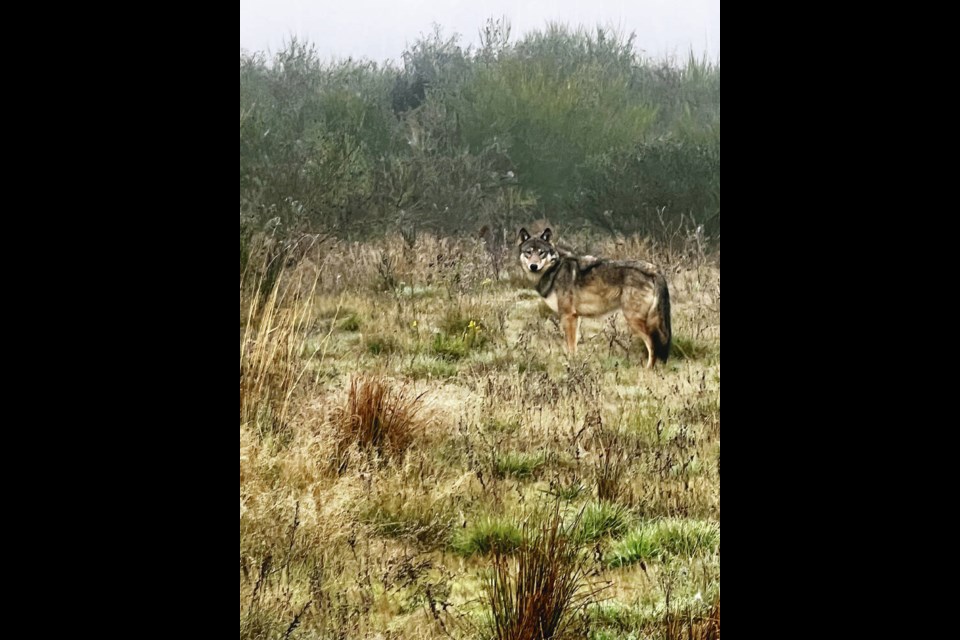A group dedicated to finding lost dogs is asking people to stay out of an industrial area off Highway 19 near Coombs where it has set a live trap to capture a wolf-dog hybrid that’s on the loose.
Gary Shade, co-founder of Find Lost and Escaped Dogs or FLED, said a large wire cage with food inside has been left in the area, and the wolf-dog has been seen several times on a game camera set up nearby checking out the trap.
The public is asked to stay away until the animal is captured. People should not let their dogs off leash in the area, Shade said, because if a dog approaches the trap, the wolf-dog might feel territorial and attack.
There are signs in the area warning people about the animal and the trap, he said.
FLED is supporting the efforts of a local woman, Colleen Rowe, who has experience with wolf-dogs, to catch the canine, combining the group’s knowledge of tracking dogs with her understanding of the hybrid.
The animal has been hanging around in the area of the trap, Shade said.
“He came around a couple of days ago in the morning and looked in the trap, checked it out and left. Then we got a picture of him later on that day, standing off to the side. Then that evening, he came back twice, just checking the trap out. So he knows there’s a food source there. And he just kind of keeps coming back,” Shade said.
The animal appears to be eating well, but it might be injured, said Rowe, who has been fostering and advocating for wolf-dogs for about 15 years.
Rowe said she was alerted to the animal’s presence in late September and set out a humane trap to capture it. FLED provided another trap after a young bear was trapped inside the first one and broke out, destroying the trap.
She has been in contact with two people who say their dogs were injured by the wolf-dog. It’s believed the hybrid suffered injuries during one of those encounters, she said.
Once the animal is captured, Rowe wants to assess its temperament and health and ensure it’s neutered.
It could go to a sanctuary in Alberta that specializes in wolf-dogs or to a private owner with the experience and knowledge to take care of it, Rowe said. Several people in the wolf-dog community have expressed interest in taking it in, she said.
Its temperament will determine whether it can join an existing pack or if it will have to live alone.
“Because you can’t just amalgamate him into an existing pack, unless he’s the right temperament, the right rank, essentially, all of those things, and he may end up having to be in his own enclosure. But they are very social, so ideally, he’d be with a female and maybe a few other members in a pack environment,” she said.
Rowe said it may take several more weeks to capture the animal, because it will need to override “tens of thousands of years of evolution” to step inside the cage.
“His instincts are screaming at him to avoid anything unknown. It’s not just like catching a dog that’s a little nervous,” she said.
Rowe said she would love to hear from the owner who apparently released the animal into the wild, because that person would have the best ability to catch the wolf-dog.
Many wolf-dog hybrids are given up when they’re about a year old because people realize it’s not like owning a dog, Rowe said.
Others buy them from breeders thinking they’ll make a good guard dog, which is “laughable” because a fear of humans is what has kept wolves alive, Rowe said.
Conservation officers are not involved in efforts to capture the animal, because it is not considered wildlife or “a controlled alien species” according to regulations, the Conservation Officer Service previously said.
The service confirmed it had received reports of a wolf-dog hybrid being released in the area by its owner.



